Walker’s High Speed Folly
Was governor’s biggest mistake turning down federal money for high speed rail?
Sometimes a politician does something so dumb that it’s hard to stop shaking your head at the folly.
Gov. Scott Walker’s decision to hand back $810 million to the federal government — money that would have built a fast train from Madison to Milwaukee and Chicago — remains one of the most unfortunate and stupid acts in recent Wisconsin history. Not only did Walker deprive Wisconsin of a modern rail system, his ideological rigidity cost our state thousands of jobs and tens of millions of dollars.
I was reminded recently just how foolish and harmful Walker’s actions were when I had the chance to ride a fast train in Europe. I was in France visiting my son, who is teaching at his university’s Paris campus. While there, I traveled to southern France by train. A train trip creates 90 percent less pollution than flying.
My destination was farther from Paris than Louisville, Kentucky, is from Madison. Yet I arrived in less than three hours, traveling over 180 miles an hour in total comfort. In a few places, the train paralleled a freeway, and although the cars were driving at their top speed, the train flew by them as if they were standing still. Since I was in France, I sat back with a glass of wine and observed the scene out the window. It was like riding through a painting — small villages of stone houses and ancient churches amidst fields of deep green and vibrant yellow.
Another benefit of the train was convenience. It went from city center to city center — no long drives to and from the airport on the outskirts of town. When I fly, I’m admonished to be at the airport at least an hour before my flight departs. There was a time warning for the train: They urged passengers to be at the station two minutes before departure.
Walker’s decision, supposedly based on avoiding about $5 million a year in operating costs, has cost the taxpayers plenty. Because the federal grant would have made necessary repairs to the Hiawatha line from Milwaukee to Chicago, returning the federal money has meant that the state has had to spend tens of millions of Wisconsin taxpayer dollars instead. The cancellation of the rail link also meant that the state was out $50 million to the train manufacturer Talgo for trains that were built but never used, plus a large punitive settlement.
It wasn’t just tax dollars we lost. In a state that has fallen behind the rest of the nation in job creation, we also forfeited a large number of employment opportunities. According to the Milwaukee Journal Sentinel, rail-related employment would have peaked at 4,732 jobs, largely in construction of the line. Operating and maintaining the trains would have created 55 permanent jobs. On top of that, the train manufacturer Talgo laid off its workforce and moved out of state. Talgo employed 150 workers in a section of Milwaukee that desperately needs jobs and held promise to expand future employment significantly. Also, a modern transportation system is a big draw for high-tech companies.
Wisconsin is now considering spending close to a billion dollars to expand a short stretch of I-94 in Milwaukee. A high-speed train would have provided (for Wisconsin taxpayers) a free and superior alternative to more pollution and traffic jams.
Of Walker’s many mistakes, his train folly may well be the biggest.
Spencer Black represented the 77th Assembly District for 26 years and was chair of the Natural Resources Committee. He currently serves as the vice president of the national Sierra Club and is an adjunct professor of urban and regional planning at UW-Madison.
This column was originally published by Madison’s Cap Times.
Talgo Trainsets Leaving Milwaukee
More about the History of Talgo in Milwaukee
- 12 Years After Being Built, Wisconsin’s Talgo Trains Enter Service - Jeramey Jannene - Mar 5th, 2024
- Talgo’s Wisconsin Trains Find Home In… Nigeria - Jeramey Jannene - Jan 18th, 2022
- Eyes on Milwaukee: Why Talgo Stays in Milwaukee - Jeramey Jannene - Sep 12th, 2019
- Eyes on Milwaukee: Talgo Lands $139 Million Contract - Jeramey Jannene - May 14th, 2019
- Eyes on Milwaukee: New Locomotives for Amtrak - Jeramey Jannene - Sep 1st, 2017
- The Return of Talgo - Graham Kilmer - Jul 17th, 2017
- Plenty of Horne: Welcome Back, Talgo USA! - Michael Horne - Nov 25th, 2016
- Eyes on Milwaukee: Talgo Coming Back to Milwaukee - Jeramey Jannene - Sep 26th, 2016
- Op-Ed: Walker’s High Speed Folly - Spencer Black - May 26th, 2016
- Murphy’s Law: The Twisted Tale of Talgo - Bruce Murphy - Aug 25th, 2015
Read more about History of Talgo in Milwaukee here
Op-Ed
-
Why Vote for MPS Funding Referendum
 Mar 30th, 2024 by Nehemiah Edwards
Mar 30th, 2024 by Nehemiah Edwards
-
Wisconsin’s Very Own Rudy Giuliani Should Not Oversee Judicial Ethics
 Mar 25th, 2024 by Richard Niess
Mar 25th, 2024 by Richard Niess
-
Voting at Wisconsin’s Universities Isn’t Easy
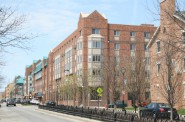 Mar 17th, 2024 by Nicole Laudolff
Mar 17th, 2024 by Nicole Laudolff
Transportation
-
MPS Makes the Case for Referendum
 Mar 23rd, 2024 by Graham Kilmer
Mar 23rd, 2024 by Graham Kilmer
-
‘Fix at Six’ Group Wants I-94 Expansion Delayed For Civil Rights Report
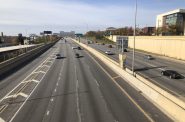 Mar 20th, 2024 by Jeramey Jannene
Mar 20th, 2024 by Jeramey Jannene
-
Wisconsin Has $78 Million Federal Funds For EV Charging Stations
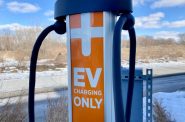 Mar 20th, 2024 by Erik Gunn
Mar 20th, 2024 by Erik Gunn


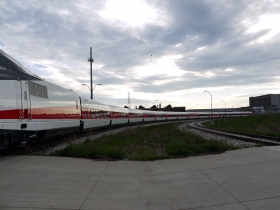
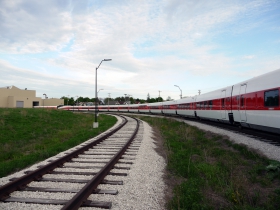
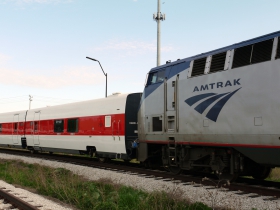
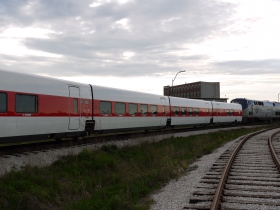
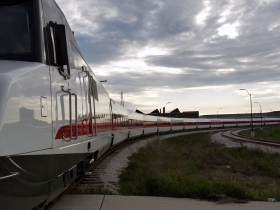
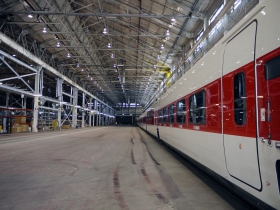



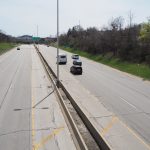











Yes, completely agree!!! As I just commented about the River Keepers, this is another example of pursuing doctrine regardless of rational analysis. This is indeed one of my biggest regrets in the Walker leadership.
The $810 million was entirely for the Madison line. It had nothing to do with the Chicago spur. I think it was a mistake too, but don’t misrepresent the facts. He tried to get money for the Chicago run afterwards and was turned down.
The entire matter was a fiasco. Why try to build a line to Madison before upgrading the most successful line in the Midwest between Milwaukee and Chicago first? I say the feds and Obama had as much to do with this failure as Walker.
Although… I do have to say… those Talgo trains are UUUUUGGGGGGLLLLYYYYY.
mbradleyc, the upgrade to CHI-MKE was part of the project since the high speed line would go from CHI – MAD.
But I do agree Obama and the feds had their hand in this as well.
Since much growth in Wisconsin jobs has been concentrated in Madison, that train would have helped connect Milwaukeeans to those jobs and to conveniently bring Madison residents here and vice versa. It was also part of a long-term plan to connect Chicago, Milwaukee and Madison to Minneapolis, which has long had its transportation act together. Minnesota is still trying to make that happen but is getting no support from Wisconsin leaders. Walker’s regressive rejection of train funding and future planning will do long-term harm to both business and tourism.
Mr. Black, I too have ridden that terrific French train you mentioned. It’s very sad that instead of getting high-speed transport, Wisconsin under Walker is going nowhere fast.
Given the number of bad decisions by Walker it is difficult to rank them. How about denying healthcare to our poorest and most vulnerable citizens for political gain? People are suffering and dying because Walker refuses to accept over $1B to expand Medicaid. How about cutting funding to our flagship university and system as well as k12? The list goes on and on. When will Wisconsin citizens wake up to this complete fraud Scott Walker?
The author makes the (false) assumption that Walker, as governor, is seeking to serve the best interests of the people of Wisconsin. This is clearly not the case.
He didn’t make a mistake; he did this, and dozens and dozens of other things that have been harmful to the State of Wisconsin, on purpose at the behest of the oligarchs who created and enabled him.
Public nothing; privatize everything
PS: and people say that Ted Cruz has a punchable face!
Since Minnesota hasn’t gotten their high speed CHI-MSP link yet, if Wisconsin elects a Democrat governor perhaps the deal could be back on the table?
It’d be nice if Russ Feingold would run for governor instead of senate. He’s one of the only progressives in this state who’s prominent enough to compete in the governor’s race, but he seems to eye national prominence over fixing Wisconsin.
MU grad Charles Pierce, writing for Esquire, does excellent ongoing analysis about Walker, his minders and funders, and their well-orchestrated efforts to dismantle everything that once functioned well in Wisconsin and served the greater good. Read it and weep.
http://www.esquire.com/news-politics/politics/news/a43685/scott-walker-wisconsin/
http://www.esquire.com/news-politics/politics/a18731/alec-in-wisconsin/
Old last-century slow rail tech that was an utter waste of money. Glad to have a governor common-sense enough to stand up to this.
WashCoRepub, calling the Talgo old last-century tech is like calling your brand new car old last century tech. I mean, it goes the same speed… right?
Killing this project cost us more money in the state then it saved. That’s not refutable.
Joe (post 8), the deal will never come back in the same form (at least without an act of Congress). The problem is federal subsidy levels.
While Washington subsidizes highways at 80% (US highways) or 90% (interstates), it only subsidizes transit construction projects at 50-80%. And even that’s not a sure thing. Unlike highway projects (which don’t need advance approval), transit projects need advance approval and must compete with other projects across the country.
What was really special about this opportunity was that it had 100% federal funding (Wisconsin wouldn’t have paid a dime of the construction costs–the feds even pledged over $130 million for “contingincies”, aka “cost overruns”), because it was part of the “Stimulus” package—the only time Washington has EVER offered to pay 100% of any transit construction project, and probably the only time it ever will.
So, if it gets re-approved by a future Legislature and Governor, state taxpayers can expect to pay 20% to 50% of the construction costs (vs zero in the deal Walker opposed).
One other big difference between the original project and authorizing similar work today is the price.
Back then, construction companies were desperate to find work and there wasn’t much demand for materials like steel and concrete. Today things are booming again and bids would probably come in much higher.
Thanks for the context Tom. That makes the decision all the more shameful.
So let me get this straight, a commuter living in Glendale or Greendale has to drive 10-15 miles to the magical train, park there car in a parking lot ($8-10) and then wait for a train, which may max out at 85 miles an hour and then arrive in Madison and then Huber themselves to their job??? Are you all smoking crack. Why not just drive to Madison in your own car and not be bothered by this inconvenience.
Jason Novak (post 15), This train was not aimed at daily commuters or even at trips between Milwaukee and Madison. It was mostly aimed at trips between Chicago and Madison. Yes, you could have taken it from downtown Milwaukee (or Mitchell Field or Brookfield, etc) to Madison, but that wasn’t the main focus.
This wasn’t a new train, but an extension of an existing train—Amtrak’s Chicago-Milwaukee “Hiawathas” most of which would become Madison-Milwaukee-Chicago trains. (There would have been additional Chicago-Milwaukee trains, too.) The vast majority of today’s Hiawatha passengers are not commuters; they are mostly leisure travelers or people on a business trip or attending a business meeting.
Top speed between Milwaukee and Madison would have been 110 MPH.
The Milwaukee-Chicago train is highly popular (in large part because Chicago traffic is so bad and because Chicago parking is so expensive). A Madison-Chicago train would be popular for exactly the same reasons.
Tom (16):
The vast majority of today’s Hiawatha passengers are not commuters
That just isn’t true. Until recently I commuted southbound daily on the Hiawatha for five years – easily more than half the passengers were daily regulars.
On a nice summer friday you’d get more leisure travelers, but most trains at non-commuting hours would run empty. There are probably stats on this domewhere but there is no way in hell the “vast majority” of hiawatha riders aren’t commuters.
And while we’re on the subject, Amtrak didn’t do themselves or their riders any favors by making the Hiawatha schedule so unfriendly to commuters. If you didnt feel like waking up in the dark to make the 610, the next train wouldnt get you into Chicago until 940. Stupid. And if you couldnt book out of work at 445 to make the 508 (really a 503), then your next opportunity to go home was at 8pm, getting you back at 930.
I am a big proponent of trains, but the policymakers and implementers lose every single person on the fence by being so incompetent in their duties.
In addition to the Madison extension mainly focused on CHI-MAD riders, lets not forget this extension was also supposed to eventually go to the twin cities. This is where the real payoff comes as you can get to the twin cities from Milwaukee (and all other stops) quicker than car, cheaper than air, and easier than both.
I’m not sure that Amtrak (or WisDOT/IDOT) has released figures to prove or disprove what portion of Hiawatha ridership is comprised of daily commuters. I would tend to agree, though, that the majority of riders are not daily commuters (not sure I’d characterize it as the “vast majority” though).
Only 2 trains fit a typical (Chicago-oriented) commuter schedule (Trains 330 and 339). Each trainset seats a little over 400 people. So let’s assume both trains are essentially full five days a week and that all passengers are daily commuters. That would be about 200,000 passengers/year. Total Hiawatha ridership has been around 800,000 passengers/year in recent years.
I think it’s fair to assume that ridership is a good mix of daily commuters, non-daily commuters, business travelers, and leisure travelers, but that no one group is dominant.
As far as scheduling goes, there are certainly opportunities for improvement. I think that a simple clock-face schedule would represent an improvement over the current schedule. However, without adding additional trainsets, the trains cannot be scheduled more frequently than every two hours (90 minute travel time, 30 minute buffer at endpoint). And, Amtrak (WisDOT/IDOT) alone does not control the schedule – it must be coordinated with and approved by the railroads that own the trackage, CP and Metra.
There’s no ridership for a train btwn Milwaukee and Madison. It would be just another government folly for tax payers to get stuck with. The only rail line with proven ridership is btwn Milwaukee and Chicago, anything else is a waste of money.
Joe (post 17), while I have no doubt that lots of Hiawatha passengers on the first two southbound weekday trains are daily commuters, that’s just 10 weekly trains out of 48.
There was a detailed survey of Hiawatha passengers taken in 2011 by the Texas Transportation Institute which showed that 33% of weekday (3% of weekend) passengers were commuters. Of that 33%, 20% were daily commuters and 13% less-than-daily.
See the data for yourself on page 8 of:
http://utcm.tamu.edu/publications/final_reports/Morgan_11-10-75.pdf
The limited schedule you cite comes from the fact that the Hiawatha only has 2 train sets. If the line were extended to Madison, there would have been 4 (Talgo) train sets (all included in the money Walker refused) and, perhaps, exactly the service frequency you suggested. One projected schedule had 10 daily trains, including Chicago-bound trains leaving Milwaukee at 6:15 am, 7:12, and 8:00 am and evening trains leaving Chicago at 3:15 pm, 5:00, 6:45, 8:05, and 10:30 pm.
You can see this schedule on pages 76-77 of:
https://web.archive.org/web/20100528124419/http://www.dot.wisconsin.gov/projects/recovery/docs/rail-grant-8-appendices.pdf
Under federal law, Amtrak may not use federal tax dollars to operate short-distance trains—defined as anything under 750 miles each way. (Long-distance trains like the Empire Builder still get federal tax money.)
The Hiawatha is subsidized by Wisconsin and Illinois (Wisconsin paying 75% and Illinois the other 25%). If there are to be more trains, it is up to Scott Walker and Illinois Governor Rauner to find the money.
So, don’t blame Amtrak for the lack of a 7 am train; blame Scott Walker.
Joe (post 17), while I have no doubt that lots of Hiawatha passengers on the first two southbound weekday trains are daily commuters, that’s just 10 weekly trains out of 48.
There was a detailed survey of Hiawatha passengers taken in 2011 by the Texas Transportation Institute which showed that 33% of weekday (3% of weekend) passengers were commuters. Of that 33%, 20% were daily commuters and 13% less-than-daily.
See the data for yourself on page 8 of:
http://utcm.tamu.edu/publications/final_reports/Morgan_11-10-75.pdf
Joe (post 17) The limited schedule you cite comes from the fact that the Hiawatha only has 2 train sets. If the line were extended to Madison, there would have been 4 train sets (all included in the money Walker refused) and, perhaps, exactly the service frequency you suggested. One projected schedule had 10 daily trains, including Chicago-bound trains leaving Milwaukee at 6:15 am, 7:12, and 8:00 am and evening trains leaving Chicago at 3:15 pm, 5:00, 6:45, 8:05, and 10:30 pm.
You can see this schedule on pages 76-77 of:
https://web.archive.org/web/20100528124419/http://www.dot.wisconsin.gov/projects/recovery/docs/rail-grant-8-appendices.pdf
Under federal law, Amtrak may not use federal tax dollars to operate short-distance trains—defined as anything under 750 miles each way. (Long-distance trains like the Empire Builder still get federal tax money.)
The Hiawatha is subsidized by Wisconsin and Illinois (Wisconsin paying 75% and Illinois the other 25%). If there are to be more trains, it is up to Scott Walker and Illinois Governor Rauner to find the money.
So, don’t blame Amtrak for the lack of a 7 am train; blame Scott Walker.
Tom (post 20), while there may not be ridership for a Milwaukee-Madison train, this wasn’t a Milwaukee-Madison train; it was a CHICAGO-Madison train and there is plenty of potential ridership.
Go to the Amtrak website and request train schedules from “Madison South” to Chicago (Union Station). You will see that Amtrak is already serving this route with buses. On June 15, for example, it shows 12 different Madison-to-Chicago buses. Clearly there is a demand for Madison-Chicago service.
(sorry for the duplicate post before!)
You know someone won’t have anything intelligent to add when they use a name like “Tom McTrolley” but then they go ahead and prove their lack of understanding by following through with an uninformed comment. I wish they would have done a better job of informing the talk-radio-only crowd on the merits of the project.
I imagine there are a lot of students out there that would rather get to Milwaukee on a 35-40 minute train ride, than a hour+ bus or car ride.
Same for anyone flying out of MKE that lives in Madison, or vice versa.
@Tom D – thanks for finding that study. I thought I remembered one being done but wasn’t sure.
Only $810,000,000? Every dime of it borrowed, mostly from China? You know, color me stupid, but I don’t think Walker did a bad thing at all.
Proponents seem to think that federal money comes from somewhere else. Some place Magical. Some place Special and Free, a place where unicorns dance on rainbows.
Guess what, oh Superior Persons of Brilliant and Subtle Thinking: That $810,000,000 would come from our pockets because the federal government has exactly zero money it doesn’t take away from somebody, either first, or in the case of repaying the Chinese for their nice loan, from our kids.
Our federal government is now butting up against being $20,000,000,000 in debt. That means we and our children are in debt. What part of living on credit cards do you Brilliant Types still think has no consequences?
I don’t care whose fault $20,000,000,000 in debt is: It does not matter whether Hubby ran up the bills on the credit card, whether Honey Bunch did, whether one refused to stop spending or one refused to pay for it. It does not matter.
What does matter is that $20,000,000,000 has real world consequences for us, and for our children, and the proponents of adding another gosh it’s a mere $810,000,000 are the problem.
If you think the problems is caused by Republicans who refuse to raise taxes on plutocrat Democrats or Republicans, can you at least acknowledge that we are buggering the country by continuing to put half our budget on a credit card?
If you can’t elect enough Dems to raise taxes to appropriate levels, then the only responsible thing to do is cut spending. But Nooooo: you will spend this country into oblivion. For the Good of the Country, of course. And the Environment.
When I said before that the Hiawatha was subsidized by Wisconsin and Illinois, I omitted a third subsidy source—Amtrak itself.
Amtrak makes hundreds of millions annually from its profitable Northeast Corridor Line (Boston–NYC–Philly–DC) and has been using that money to partially subsidize money-losing trains in the rest of the country (including about $3.8 million for the Hiawatha). Amtrak has been asking Congress for permission to spend all that money on improvements in the Northeast Corridor, and this week the full US Senate gave Amtrak the green light. So far, the House isn’t on-board.
If this change takes effect, that $3.8 million shortfall will have to come from increases in state (WI & IL) subsidy and/or a fare increase of about $5 each way.
So, why does the Hiawatha lose money while east-coast trains turn a profit? A huge difference in fare levels.
Hiawatha fares are much cheaper than the Northeast Corridor’s. NYC–Philadelphia is 91 miles, nearly the same distance as Milwaukee-Chicago (86 miles), so you’d expect similar fares. But while the Hiawatha charges $26 at most, the minimum NYC–Philly fare is $45 and even then only with 7-day advance purchase.
I looked at NYC–Philly fares for today (Friday before a holiday weekend) and the lowest one-way fare I could find was $55 (for a late-night train arriving after midnight); every other train (there are lots of trains—10 trains after 6 pm) charged at least $88. The most expensive was $201 in First Class (including a hot meal served at your seat). And for next week, after the holiday, I saw one-way fares as high as $258 (again, in First Class).
Here is an article describing the proposed Amtrak money shift:
http://www.courant.com/news/connecticut/hc-amtrak-northeast-0523-20160523-story.html
No need to color you stupid Penrod; it’s quite obvious.
#30: Frank, that is so totally cute. I bet you think you were clever.
I can just see a little bunny hopping through the clover, telling himself how very, very wonderful he is.
With tularemia.
Your Mommy thinks you are ever so clever for not replying to my point that we cannot afford your wonderful choo choo train.
How ironic that Obama chastised Walker for turning down Federal funds to partially pay for building high speed rail (because Wisconsin taxpayers would have been responsible for maintaining and subsidizing it forever after). Ironic because the Japanese government made the exact same offer to Obama (free bullet trains & track installation) for lines running from Washington DC to Boston and all the way to FL— only to have Obama turn it down for that exact same reason that Walker turned down Obama’s (high speed rail) offer. (Obama said the ongoing maintenance & operation would prevent it from ever “breaking even”.) No wonder America is so sick of “Career Politicians” ! (Personally I’m a BIG fan of passenger trains — especially ones like the “Rocky Mountaineer” or the now-bankrupt “American Orient Express” from TX to CA. But as a businessman I have to admit; if you can’t make the numbers come out before you start, throwing “gift” money at a project will never change the inevitable outcome. ( It will be as doomed as Japan’s gift to Obama or Obama’s tease to Walker.) HOW COME? Logistics & statistics, my friend. Here’s where the “mathematically challenged” have to rely on emotion and habit to decide what can ONLY be correctly decided by “doing the math”. If you have 2 points in a line, with the majority of people at point 1 all going to point 2 — and then returning later — trains work great. This is the case in Japan (a long mountainous island where the majority travel back and forth along the same path en mass). It does NOT work in Milwaukee; and even less so in Madison because too high of a percentage of potential train users are spread out sporadically over a 360 radius around Madison ( and Milwaukee has the same problem). So as much as I LOVE trains; I must concede that Obama was just as right to reject Japan’s train offer as Walker was to reject Obama’s train offer.
There is nothing constructive about the above rhetoric. It’s not based in reality. It’s as unscientific as the Creation Museum in Bullit, Kentucky.
As for the Hiawatha line, the Obama administration was more than petty and puerile enough to turn down Walker’s request for funding for it. The one part of the line that made sense to do, Obama killed it.
Walker did’t hate high speed rail. He and the legislature realized it was foolish to spend a half billion dollars just to run an old school passenger train 49MPH and 79MPH on old freight tracks.
http://www.masstransitmag.com/news/10268058/wisconsin-denied-federal-aid-to-improve-hiawatha-service
Penrod (post 28), I’ve been reluctant to reply because you obviously have difficulty with large numbers. (A “trillion” is a 1 followed by 12 zeros, not 9.)
I believe that the National Debt should be reduced (but never brought down to zero). The problem is that the Republicans don’t. While the GOP loves to moan about the debt, they have actively worked against repayment.
In 2001, when we were paying down the Debt, George W. Bush, before a joint session of Congress, denounced that repayment (calling it “overtaxation”) to cheers from the right side of the aisle. His exact words:
“You see, the growing surplus exists because taxes are too high and government is charging more than it needs. The people of America have been overcharged and, on their behalf, I am here asking for a refund.”
http://www.let.rug.nl/usa/presidents/george-w-bush/state-of-the-union-2001.php
I also point that $810 million, much of it to improve Chicago–Milwaukee train service (and all paid by the federal government—which indeed has money) is cheaper than Walker’s current plan to spend $1000 million (much of it borrowed by Wisconsin) on a mostly useless third lane on I-90 between Madison and Chicago.
Craig Paske (post 32), the Japanese “bullet train” you referred to was actually a Mag-Lev, which is very different from HSR. Mag-Lev doesn’t use conventional track and requires a totally new right-of-way. Japan only offered the hardware (trains and track) free and then only for the first 40 miles (DC to BWI to Baltimore–a route already served by 2 separate passenger train operators) and not the right-of-way acquisition costs.
This is so very different from the Madison train:
• The Madison train would use existing railroad right-of-way (instead of acquiring, via eminent domain, a totally new route in a super-expensive, densely populated area).
• Conventional freight and passenger trains could (and would) use the Wisconsin HSR tracks (unlike Mag-Lev).
• Baltimore–Washington already has rail passenger service, while there were (and still are) no passenger trains between Chicago and Madison.
Many passenger trains lose money. Today’s Chicago–Milwaukee Hiawatha trains lose money. So would a Chicago–Madison Hiawatha train. And yes, Wisconsin taxpayers would have to cover part of that loss, just like they already do for the Chicago–Milwaukee trains.
I strongly disagree with your assertion Milwaukee isn’t suitable for rail passenger service, and I think most Hiawatha passengers disagree, too.
Allen (post 33), the funding for the Chicago–Milwaukee train that Obama “rejected” was all stuff that was included in the Chicago-Madison train package that Walker rejected. The Talgo trains, the Talgo maintenance facility, and the new locomotives, were all 100 part of the Madison project.
After deciding against taking that money (which included 100% federal funding), Walker turned around and asked for some of the same things (at 50%–80% funding).
Incidentally, the Talgo trains Walker was asking for are the same design he ended up rejecting (but paying for). And before Walker rejected the original Talgo trais sets, the state GOP also ended up rejecting the Talgo maintenance facility.
So of the the 3 things you mention that Walker asked for and didn’t get were mostly things the state GOP wouldn’t have accepted anyway.
p.s. The top train speed between Madison and Milwaukee would have 110 mph, not 49 mph or even 79 mph by 2016.
Walker saved us a billion or so, as all the lines, like California, are way over budget and screwed up. We have a high speed bus, taxis and can have train, right now, it we want. Amtrak. There was no such thing as high speed between Milwaukee and madison, the bus would have beaten it and been more convenient.
Just saying I live in Washington State, and we got an extra $150 mil to upgrade our trains thanks to you and Florida turning down that money.
Can’t wait to finally travel more conveniently to Portland next year with 12 trains a day, and about 20 minutes cut off our travel time.
Hi Seattleite, People who like having their lifestyle choices subsidized by others rarely complain about getting too big a subsidy. Enjoy the fruits of our money.
Just like the commuters between Milwaukee and Chicago whose travel is subsidized by the taxpayers. Their lives and yours are enriched by other people’s money.
@Penrod (#39). Did you drive on a road today? You’re welcome.
Rich (40) Indeed I have, but apparently unlike you, I don’t use one group’s subsidies as an excuse for demanding other things be subsidized.
To the extent we subsidize planes, trains, and automobiles, we should stop it, not extend ever greater subsidies to some, and to new ones.
If we want efficient use of resources, which I hope is what this whole train conversation is about, the only way to discover what are the most efficient uses of resources is to get rid of the subsidies.
That Republicans and Democrats alike are opposed to that does not change its truth, only the politics.
Without subsidies, it is possible that trains would be more efficient transportation for one or two people, who would take into consideration the cost of the tickets and transportation to the departure station, as well as the productivity gained by being able to work while traveling. It is also possible that groups of three or more might find driving more efficient, despite the cost of parking and tolls, or bussing might be more efficient. Or not.
The point is that if one seeks efficient use of resources, one must end subsidies so that people can make rational decisions based on all the costs: tickets, gas, wear and tear on vehicles, time spent or used, tolls, parking, getting stuck in traffic, and so one. That calculus would probably change from trip to trip, but we can’t know the real cost of any mode of travel if we subsidize them.
Just as forcing the auto companies to include the cost of pollution control devices in cars forced drivers to bear the cost of reducing pollution, instead of polluting madly and foisting the costs off on everyone who breathes, we can better reduce costs only when we can see those costs. Don’t expand subsidies: Reduce them. Eliminate them.
Oh brother!
PS: Brevity is the soul of wit.
Frank Galvan (42) Thanks for that cogent, and by your standard, carefully thought out response. It adds a lot to the conversation. Like a bumper sticker educates.
Penrod, I understand your ideological stance on government subsidizing trains, roads, and other parts of society. While it makes a certain fundamental sense in order to find cheaper ways to do things, it doesn’t always means you find the best ways. There are certain areas where you won’t get the best outcome based solely on the motivations of profit. It’s why we regulate utilities, subsidize higher education, run public services.
However, the biggest issue I have with your position is that you do not view transportation in the light in which it really exists. it’s not just a public need or service, it’s an investment in a metro, state, or nation. Good transportation systems make everything else possible and encourages organic growth of the private sector. It’s no coincidence that Kenosha county is seeing such rapid growth along I-94 or why the fox valley fought so hard to have HWY 41 designated an interstate. If you fail to see that a well built middle distance passenger rail system has numerous benefits then you are not making an informed decision on the merits of investing in it.
Worst of all, in a practical sense, fighting the 800+ million dollar extension did not save us any money. Not only did it cost us direct funds from the State level in needed upgrades to the Hiawatha line and Milwaukee’s station, but the federal tax dollars still went to rail, just in different states. So while we still see our tax dollars spent, we no longer see any benefit.
Not one long winded argument here, makes any sense. We did not need another line from Milwaukee to Madison. We had buses that got there faster, and easier and could be rerouted if needed. Autos can get there in an hour, trains were slower. If we need a train just reroute the regular AMTRAK. Fast train makes sense in Europe where the concentration of people is far heavier. We rode from London to Paris, neat But in Wisconsin we can get round easier, so stick with basics and do them well: Roads, buses, cars, planes, trains for freight.
Better to do some things right and well than have 5 different things done halfast and poorly going way over budget like California, China and other places. Showmen successfull programs out side of heavily populated corrida that we cannot do better with buses and cars.
AG, I think rail is actually cheaper than highways, but highway subsidies are so pervasive people just don’t notice them any more.
Look at what it costs to rebuild a railroad vs rebuilding a highway. Wisconsin is paying $1.9 billion to rebuild (and another lane to) I-94 from Milwaukee to the Illinois line. Assuming that’s 40 miles of 8-lane freeway, it costs over $5.9 million per lane mile. In 2010, the UP railroad rebuilt their parallel line from Milwaukee to Illinois at $200,000 per track mile (and a railroad track can carry more people or freight tons than a highway lane).
Look at taxes. Railroads pay property tax on their tracks; highways (which need lots more land per person or ton carried) are tax-exempt. And when freeways blossomed in the 1950s and early 1960s, railroads were burdened with a 10% federal excise tax on passenger tickets, none of which was spent on railroads (unlike that era’s gas taxes, all of which were spent on highways).
Look at law enforcement. There are entire government agencies (like the Milwaukee County Sheriff) that spend the bulk of their resources on highways but are funded from general revenue, not gas taxes. Railroads, on the other hand, are expected to fund police from their own budgets; Amtrak has its own police force with 500 people in 30 locations from coast-to-coast.
https://police.amtrak.com
Consider safety. Passenger deaths onboard trains are so rare, they make headlines when they happen (like last year’s Amtrak wreck in Philadelphia). Look at New York’s Metro-North Railroad, the nation’s 2nd largest commuter railroad.
To understand how big Metro-North is, compare it to Wisconsin’s busiest freeway (I-894 between the Zoo interchange and Greenfield) which carried 153,000 vehicles/day in 2009 (latest data I could find). If you assume 1.5 people per vehicle, that highway—Wisconsin’s busiest—carried about 230,000 people daily.
In 2009, Metro-North averaged 219,000 passengers daily (275,000 on weekdays, fewer on weekends) and carried those people an average of 27.7 miles each. In 2009, Metro-North had zero passenger deaths. In fact, they had no passenger deaths for thirty years, from their founding in January 1983 through 2012. The string ended with 4 dead in a December 2013 derailment. Can you imagine any super-busy 25-mile stretch of freeway going 30 years between fatal crashes?
WCD, the Midwest (centered around Chicago) is a great example of a geographic area where the middle distance of major metro’s is prime for high speed rail service. Our economies would all be stronger with more and better connections between the cities. Especially as the roads become more and more congested, high speed rail becomes the best way to create a better transportation network. Busses just won’t cut it and Airlines and airports continually get worse and worse in terms of performance.
Tom D, excellent points. I don’t like to do the direct comparison of car vs rail, but all the good points you bring up are important to discuss because many anti-rail people fail to understand the full extent to which other modes of transportation are subsidies without question.
A vicious and, as per usual, fact free attack by WDC…on proper grammar!
Running a high speed halfast train 60 or so miles is the ultimate in pork barrel baloney competing with buses that do the job better, faster and are more efficient.
Another dopey idea from Milwaukee like the Bucks arena instead of new roads and a trolley instead of more cops as the crime escalates beyond belief, cause of these nutty ideas from the Left about crime and punishment.
I am awaiting for all of the announcements of the new development, in Milwaukee and jobs, cause of the Bucks and the Trolley????
WCD, your logic is awesome. If you think this is about 60 miles of track, you’re very confused. That’s like someone considering putting a 400 sq ft addition on their house and deciding not to in the end because they don’t want to live in only 400 sq ft of living space. Who ignores the rest of the house?
Or how about deciding not to build 100 miles of track going west when they built the transcontinental railroad because… well, who wants to go 100 miles?
Why build an extra lane of freeway… 1 lane isn’t enough to carry all that traffic?
Why should I put $1000 in my retirement account when I can’t live off of $1000 dollars?
I could do this all day. Point is, and this is the last time I’m going to bother trying to explain it to you, while the Madison-Milwaukee extension would have plenty of riders, it’s part of a LARGER system that will eventually connect Chicago to the Twin cities and connect all the important cities in between. This makes them all stronger and more competitive.
A high speed link between Milwaukee and Madison really isn’t comparable to the streetcar. Buses with a dedicated lane can do the job of the streetcar. A bus can’t do the job of a 100MPH train to Madison.
First of all it will never go 100mph except fro very short distance, will avg 67mph. Spending tax payer money when the schools are national disgrace, short 250 cops and state has lots of needs fro roads is really stupid. AG not worth time to talk bout your silly crap.
The average speed of any train is dragged down significantly by the fact that it stops to pick people up. Buses do that too. What’s the average speed of a bus to Madison making the same number of stops?
Or did you only look at the average speed of a train?
Not sure where you get 67 mph. The average speed would have been 69 mph in 2013. Last year the average would have been 80 mph with top speeds of 110 mph. http://www.jsonline.com/news/wisconsin/111362019.html
Not sure about average speed but bus takes 2 hours to get from Milwaukee to Madison, with some a few minutes more or less depending on stops and time of day. Train would have taken 1 hour and 3 minutes starting in 2015. Pretty big difference.
Bus makes 16 trips per day fastest 1:45. Only those that line their pockets want these trolleys and Light rail and halfast trains . Train goes too if we need one, we can reroute the amtrak instead of spending multibillions. Go billion dollars over budget like Ca. Out state people want to know why they should subsidize Milw/Madison will they subsidize Wausau/Madison
WCD, you’ve pretty much discounted yourself from this discussion since you clearly have little understanding of what the project entailed, how it would work, or what the future plans would be off of it.
On a fun side note though, I love that you mention more funding for schools here but you regularly talk about how the schools spend too much during other discussions.
“Out state people want to know why they should subsidize Milw/Madison will they subsidize Wausau/Madison”
And that in a nutshell is exactly what’s wrong with today’s political climate. We’ve all been turned against each other.
The needs and solutions are different in different areas.
WCD, this was a Madison–CHICAGO train. The Badger Bus schedule is irrelevant since it doesn’t run between Madison–Chicago.
There is a large demand for Madison–Chicago travel. Amtrak has 22 daily buses (11 each way) between Madison and Chicago. One-way trips take as much as 4:45 (because of Chicago’s traffic). The train would have taken under 3 hours.
By the way, the bus you cite as a train alternative (Badger Bus) is subsidized, too. It is 100% exempt from federal fuel taxes.
Tell me, WCD, what is your position on the Chicago-Milwaukee train? It loses money and is subsidized by taxpayers all across Wisconsin. If it is wrong to ask people in Wausau to subsidize a Madison train, is it also wrong to require them to subsidize a Milwaukee train (which is even further from Wausau)?
Tom D, don’t bother… he’s not really comprehending that this is more than a MAD-MKE thing nor the benefits of it.
WCD (post 49) You said “I am awaiting for all of the announcements of the new development, in Milwaukee and jobs, cause of the Bucks and the Trolley”
I can’t help you with the Bucks, but here is a list of projects along the streetcar line:
http://www.themilwaukeestreetcar.com/economic-development.php
The property taxes from this new development will exceed the annual streetcar operating subsidy.